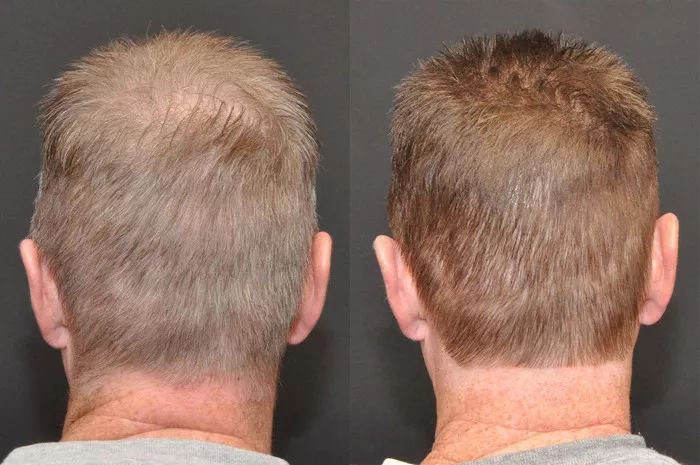A Follicular Unit Extraction (FUE) hair transplant is a life-changing procedure for many individuals seeking to regain their natural hairline and confidence. However, a common question that arises after the surgery is, “How many days after a FUE hair transplant are grafts secure?” In this comprehensive guide, we will delve into the factors that affect graft security, the typical timeline for graft stabilization, and the dos and don’ts during the crucial post-transplant period.
What is FUE hair transplantation?
Follicular Unit Extraction (FUE) hair transplantation is a surgical procedure used to treat hair loss and restore natural hair growth. During FUE, individual hair follicles are extracted from a donor area, typically the back or sides of the scalp, using a specialized micro-punch tool. These follicles are then meticulously transplanted into the recipient area, where hair is thinning or balding. FUE is known for its minimally invasive nature, leaving no linear scars, and it offers a natural-looking result. This procedure has gained popularity due to its effectiveness and relatively short recovery time, making it a preferred choice for many individuals seeking hair restoration.
Factors Affecting Graft Security
Before we discuss the timeline for graft security, it’s important to understand the factors that influence how quickly your grafts become secure:
1. Graft Quality
The quality of the grafts harvested and transplanted plays a significant role. Healthy, well-preserved grafts are more likely to secure themselves in a shorter time.
2. Transplant Technique
The skill and precision of your transplant surgeon can impact graft security. An experienced surgeon minimizes trauma to grafts during the transplant process, aiding in quicker stabilization.
3. Post-Transplant Care
Your adherence to post-transplant care instructions is crucial. Proper care ensures the grafts have the best environment for healing and securing themselves.
The Timeline for Graft Security
Graft security is a gradual process, and it’s essential to manage your expectations. Here’s a general timeline for when you can expect your grafts to become secure:
1. Initial Days (1-5 Days Post-Transplant)
In the immediate days following your FUE hair transplant, the grafts are still fragile. They are not fully anchored in the recipient area. During this time:
a. Be Extremely Gentle
Avoid any direct contact with the transplanted area, and refrain from touching or scratching it.
b. Follow Post-Transplant Instructions
Adhere strictly to the post-transplant care guidelines provided by your surgeon. This includes avoiding strenuous activities and following a prescribed hair washing routine.
2. First Week (5-7 Days Post-Transplant)
Around the end of the first week, some grafts may start to secure themselves, but not all. It’s still a delicate period:
a. Avoid Pressure or Friction
Continue to be cautious when handling your hair, and avoid wearing tight headwear or using aggressive hair care products.
b. Healing Progress
Your scalp may still be red and scabbed at this stage, which is a normal part of the healing process. These scabs will gradually fall off.
3. Second Week (7-14 Days Post-Transplant)
By the end of the second week, a significant portion of your grafts should start to secure themselves:
a. Reduced Risk
The grafts are less vulnerable now, but you should still handle them with care.
b. Regular Washing
Continue following the recommended hair washing routine to keep the scalp clean and promote healing.
4. Weeks 3 to 4 (14-28 Days Post-Transplant)
During this period, most of your grafts should be secure, although some may still be in the process of anchoring themselves:
a. Normal Hair Care
You can gradually return to your regular hair care routine, but still exercise caution when styling and brushing.
b. Resuming Physical Activity
You can typically resume light physical activities, but avoid heavy lifting or strenuous exercises for a bit longer.
5. Months 2 to 6 (60-180 Days Post-Transplant)
At this stage, your grafts are securely anchored, and you will begin to notice new hair growth:
a. Natural Growth
Your transplanted hair will start to grow, albeit gradually. Patience is key as you await the full results.
b. Haircare Routine
You can return to your normal haircare routine, including coloring and styling, with caution.
Post-Transplant Tips for Graft Security
To ensure your grafts become secure within the expected timeline, follow these essential tips:
1. Avoid Sun Exposure
Protect your scalp from direct sunlight by wearing a hat or applying sunscreen as it can cause irritation and slow down healing.
2. Stay Hydrated and Eat a Balanced Diet
Proper nutrition is essential for optimal healing. Stay hydrated and consume a diet rich in vitamins and protein to support graft health.
3. Regular Check-Ins with Your Surgeon
Attend follow-up appointments with your transplant surgeon to monitor progress and address any concerns promptly.
4. Patience Is Key
Remember that hair growth and graft security take time. Be patient and realistic about your expectations.
See Also: How much Is a frontal hair transplant: A Full Guide
In conclusion
The timeline for graft security after a FUE hair transplant varies from person to person. Factors like graft quality, transplant technique, and post-transplant care play pivotal roles. By following post-transplant care instructions, being patient, and managing your expectations, you can achieve the best results and enjoy a natural-looking head of hair after your FUE hair transplant.


